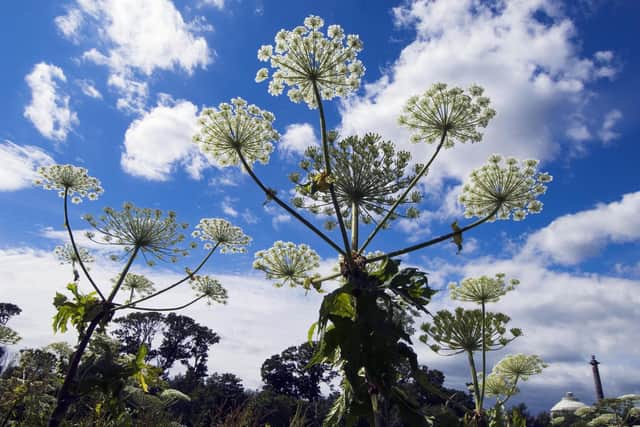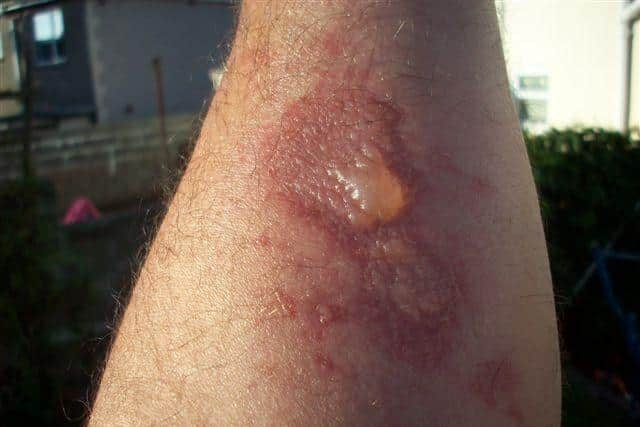Giant hogweed: Warning over dangers to people and pets from toxic plants in Scotland
and live on Freeview channel 276
Giant hogweed is not native to Scotland but is nowadays widespread across central and eastern parts of the country.
It is commonly found along river banks, on waste ground and beside roads and railtracks.
Advertisement
Hide AdAdvertisement
Hide AdIts sap contains a toxic chemical which causes skin to become sensitive to sunlight and results in nasty blisters and burns that can be serious and long-lasting.
Every year large numbers of gardeners, walkers, children and animals are injured after contact with the invasive plant.
Giant hogweed, as its name suggests, is tall with huge leaves and umbrella-like white flowers.
It bears a striking resemblance to common hogweed, a harmless relative, as well as cow parsley, but is much larger.
Advertisement
Hide AdAdvertisement
Hide AdPeople and pets are advised to give it a wide berth as just rubbing up against the plants can be enough to cause a serious reaction.


The warning has been issued by state agency NatureScot and the Care of Burns in Scotland managed clinical network ahead of the start of the school summer holidays, when more people, particularly families, are likely to be exploring nature and the outdoors.
Stan Whitaker, invasive species policy manager for NatureScot, said: “It’s really important for people to be able to recognise giant hogweed so they can avoid potentially serious injury.
“Thankfully the plant is relatively easy to identify when fully grown due to its enormous size of between two and four metres tall, with large white clusters of flowers up to 80 centimetres wide.


Advertisement
Hide AdAdvertisement
Hide Ad“Its leaves are very large and sharply divided and can be over one metre across while the stems are green with purple blotches and covered with bristly hairs.”
Eleanor Robertson, senior clinical research fellow at NHS Greater Glasgow and Clyde, said: “This plant, although impressive to look at, is best avoided and reported to your local council.
“If you do come into contact with the plant, you must cover the affected area to block sunlight, then thoroughly wash the area to remove the sap.
“Should redness or blistering occur, you should seek medical help.”
Comment Guidelines
National World encourages reader discussion on our stories. User feedback, insights and back-and-forth exchanges add a rich layer of context to reporting. Please review our Community Guidelines before commenting.
